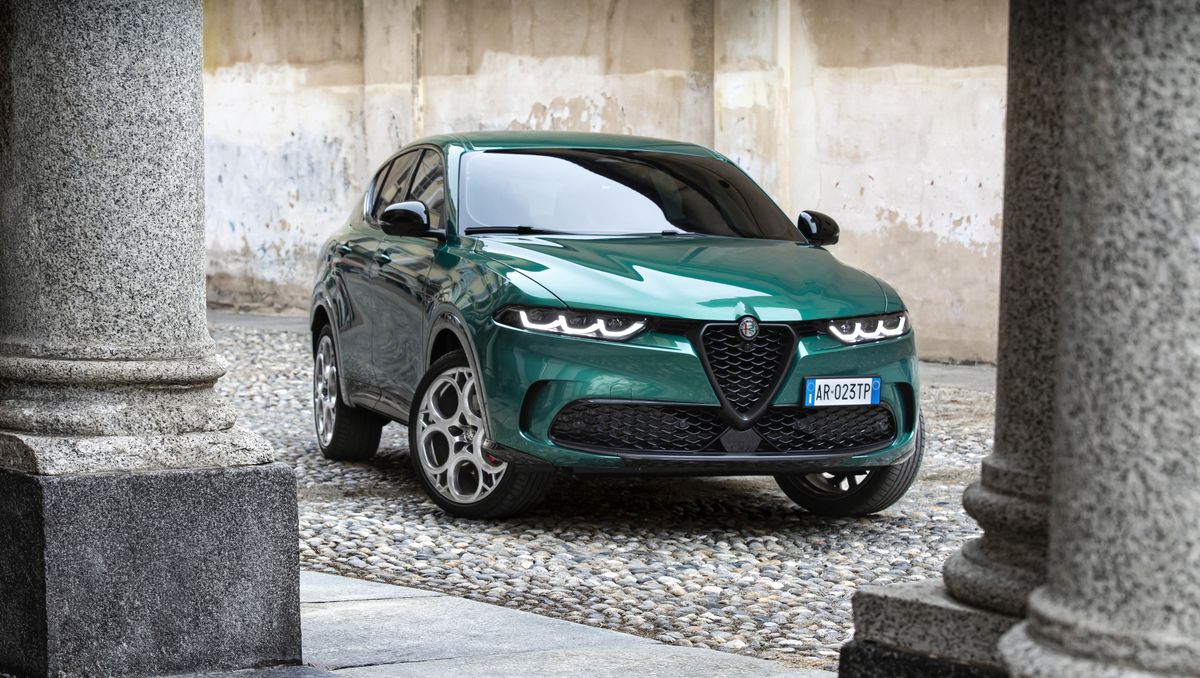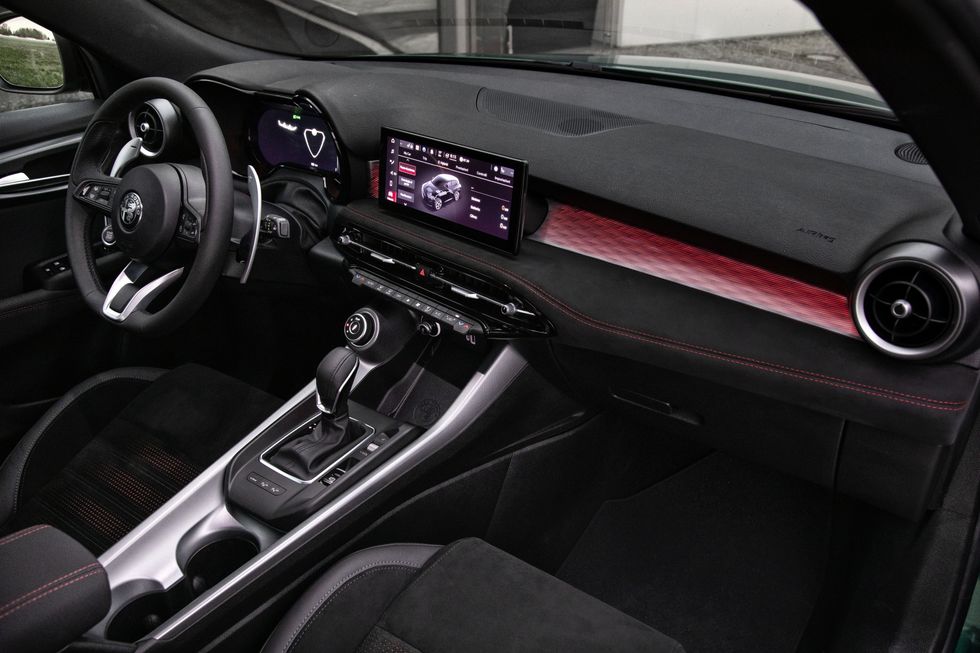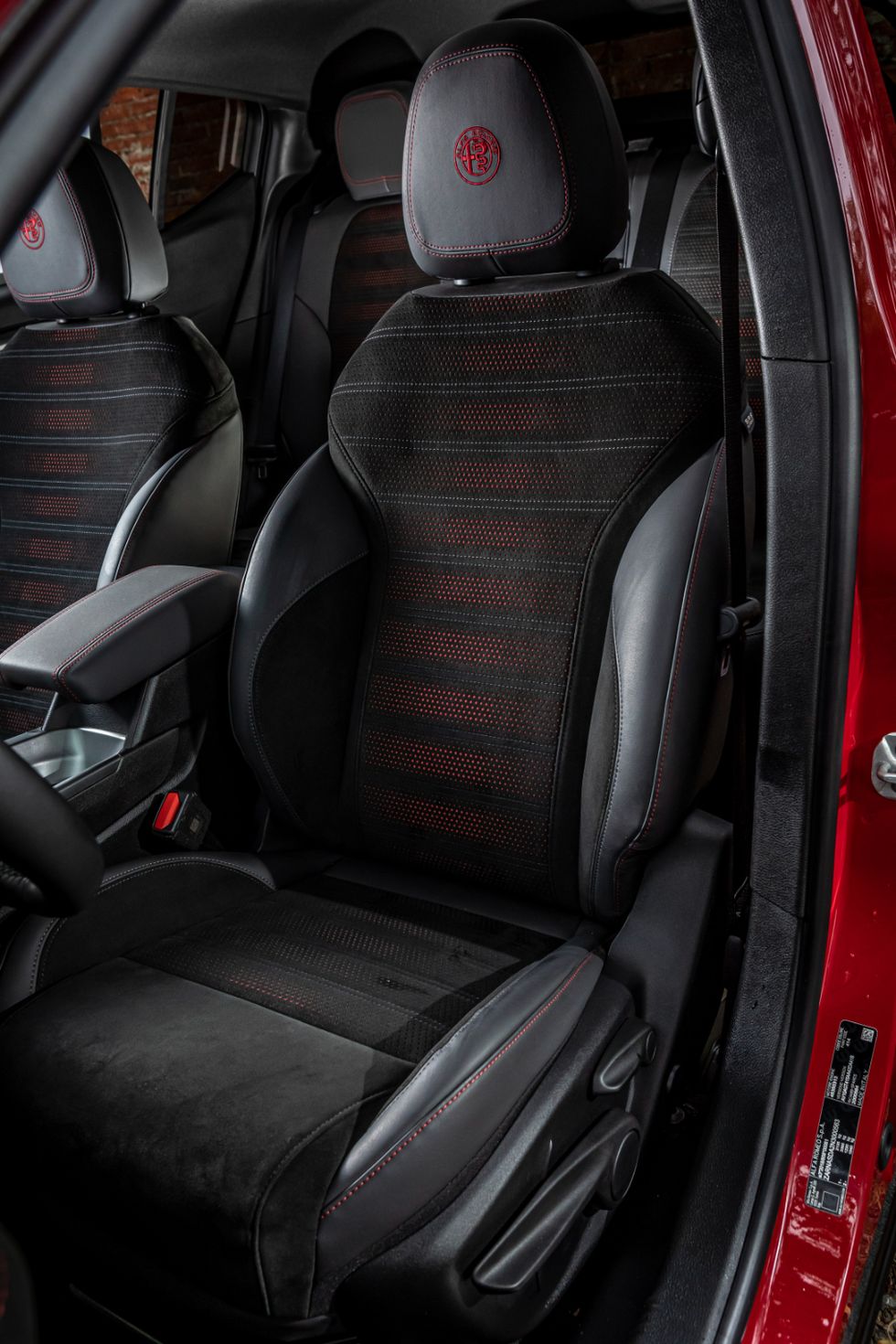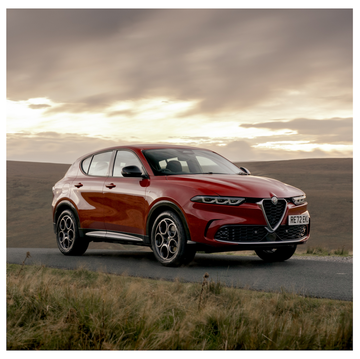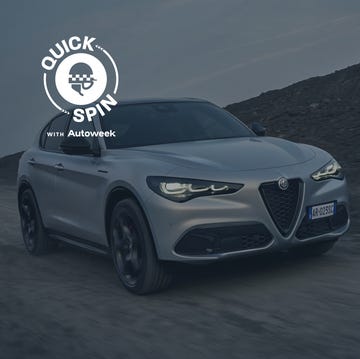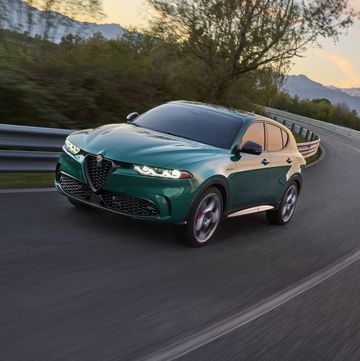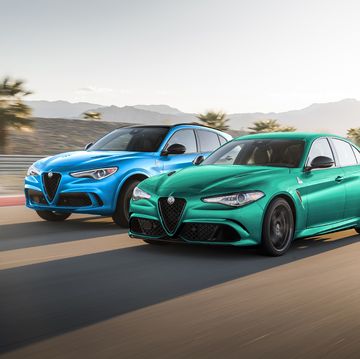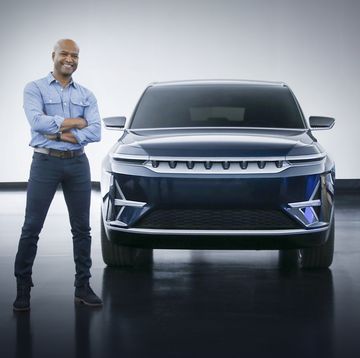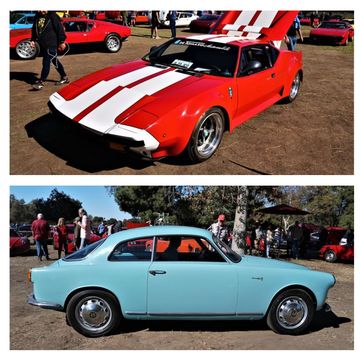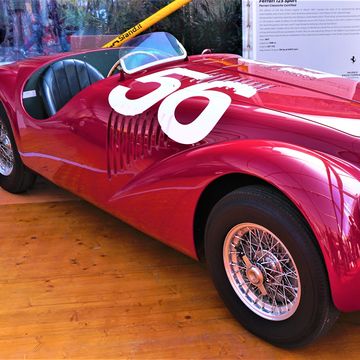- The 2024 Alfa Romeo Tonale reaches US shores next month from its plant near Naples, Italy, with a 1.3-liter turbocharged MultiAir four-cylinder configured as a plug-in hybrid with 30 miles of electric range.
- The combined 285 hp and 347 lb-ft of torque are more than adequate for passing on expressways and the occasional wide-open sprint.
- The interior is comfortable and ergonomically designed but is not intended to dazzle at first glance. Black is the only interior color available.
With its 113-year history, Alfa Romeo has built its brand character around racing and tightly sprung production sports cars styled with Italian flair—well suited for a sweaty-palmed rip through the Dolomites. From the 1929 Alfa Romeo 6C roadster and the 1954 Giulietta coupe to the dramatic 2007 8C Competizione and the 2015 Giulia Quadrifoglio sedan, there’s been no shortage of sheetmetal to do Milan proud.
Today, Alfa Romeo is sorting out its future—leaning heavily into battery-electrics starting next year—and needs to pay the bills in the same way Porsche did when it launched the Cayenne SUV (then the smaller Macan), or BMW with the X5.
Sporty brands aren’t supposed to build heavy, functional cargo haulers with spacious second (or even third!) rows, and yet the accountants know it’s the right move because shoppers with money apparently see no compromise in the showroom. They see a desirable brand, along with practical functionality. Isn’t that why the Lamborghini Urus is so popular?
Alfa Romeo has already crossed this bridge with the Stelvio in 2017, and it has outsold its Giulia sedan platform mate in the US since then.
They will be proven right yet again when the 2024 Alfa Romeo Tonale (pronounced ta-NAHL-ee) reaches US shores next month from the Pomigliano d’Arco plant in Naples, Italy. Is this two-row plug-in hybrid with a tiny 1.3-liter turbocharged MultiAir four-cylinder going to make a list of the top Alfa Romeos of all time?
No, but the product planners are probably OK with that. They have surveyed the premium landscape and have delivered a crossover that fits stylistically and dimensionally amid potential European cross-shop rivals such as the Audi Q3, BMW X1, Range Rover Evoque, Mercedes-Benz GLA, and Volvo XC40. Sales in this small upscale crossover segment are up more than 8% this year.
On the highways and byways around Milan, the unibody Tonale in top-line Veloce trim is well suited for negotiating the narrow roads twisting through small towns in northern Italy, while the combined 285 hp and 347 lb-ft of torque are more than adequate for passing on expressways and the occasional wide-open sprint between roundabouts on two-lane country roads.
The exhaust even sounds throaty when switched into “Dynamic” mode with the DNA dial near the driver’s right knee, as shift points with the six-speed automatic transmission are delayed, allowing for higher revs and maximum output. “Natural” mode is for everyday use, balancing both the engine and electric motor, while “Advanced” mode is for maximum efficiency, running in electric mode until the high-voltage battery is depleted (about 30 miles).
By today’s standards, the horsepower and torque numbers look a bit ho-hum on paper, but they actually stack up well to the competition, thanks to the 90-kW e-motor attached to the rear axle, enabling standard all-wheel drive.
The plug-in hybrid setup allows the engine to cycle on and off without much noise. But the same can’t be said for this powertrain at cold start, as the engine sounds coarse as it warms up. Even when the engine is fully warm, popping open the hood reveals a black plastic engine cover—bearing the Alfa Romeo brand name—visibly shaking at idle. It is unclear whether this can be addressed before the first US cars are delivered.
At parent company Stellantis’ Balocco Proving Grounds near Milan, the 4133-pound Tonale is at home on the undulating handling track as Sport mode stiffens up the fully independent MacPherson suspension (with frequency selective damping shocks) and allows easy weaving through chicanes and tight corners.
With the transversely mounted combustion engine driving the front wheels, the electric motor in back sends more power to the outside rear wheel in corners, helping to mitigate understeer and allowing more speed along the way. The electric power steering is well tuned for these dynamic situations (although US-spec cars will have firmer steering, we’re told), and the chunky, fixed aluminum shift paddles certainly come in handy.
Off the track, the Comfort setting delivers a noticeably more compliant ride and softer suspension. This is the default mode for daily driving that most customers will find perfectly acceptable.
The Tonale is handsomely styled—particularly with the bright Verde Fangio Metallic green paint, 20-inch Grigio five-hole alloy rims (a $2000 option), and distinctive, brand-specific inverted-triangle grille. But it won’t turn many heads, much like its rivals in a segment intended for entry-level shoppers instead of exotic eye candy.
The interior is comfortable and ergonomically designed but is not intended to dazzle at first glance, with a fair amount of black hard plastic throughout. Black is the only interior color available, reinforcing Alfa CEO Jean-Philippe Imparato’s mission to reduce build complexity from 4000 parts per car to 1000. It’s also worth noting here that Alfa Romeo doesn’t position itself as a “luxury” brand (that’s Maserati’s job) but instead as the “premium” brand within Stellantis.
Offsetting the darkness in the cabin are six shades of ambient lighting (also illuminating a metallic strip on the passenger side of the instrument panel) and bright red contrast stitching on the seats, doors, and center console.
Sport cloth seating fabric is standard on base Sprint and mid-level Ti trims, and black leather is optional on Ti and the top Veloce trim. But standard on Veloce is Alcantara microsuede that is perforated, allowing bright red accents to shine through in the Tonale’s most aesthetically pleasing interior configuration.
The driver-assistance technology is competitive, with standard features such as adaptive cruise control, blind-spot assist, traffic sign recognition, drowsy driver detection, and full speed forward collision warning—all part of a $2000 Active Assist Plus package.
Our Veloce test model stickered for $53,590, including $1595 destination, with a base price of $47,495, while the Ti starts at $44,995 and the base Sprint starts at $42,995. That’s attractive pricing considering the average new car in America sells for nearly $50,000.
The $7500 federal tax credit through the IRA is not available when purchasing a Tonale, but it could be in play for leases. “We are expecting our close lending partners to pass along a Capitalized Cost Reduction benefit on a lease of qualifying EVs for the amount of the Commercial Clean Vehicle Tax Credit,” spokesman Nick Cappa says. “The leasing benefit will provide immediate access to the credits.” Bottom line is, ask for the credit if you’re leasing.
The Tonale might be coming late to the small upscale crossover party, but Alfa management is counting on it to double the brand’s US sales (it sold a mere 12,700 Giulias and Stelvios combined in 2022). That growth is expected to come from a younger mix of buyers and more women.
And if the plan works, Alfa Romeo will continue to have a future in the US.
Is the Alfa Romeo Tonale on your shopping list of upscale small crossovers? Please comment below.
